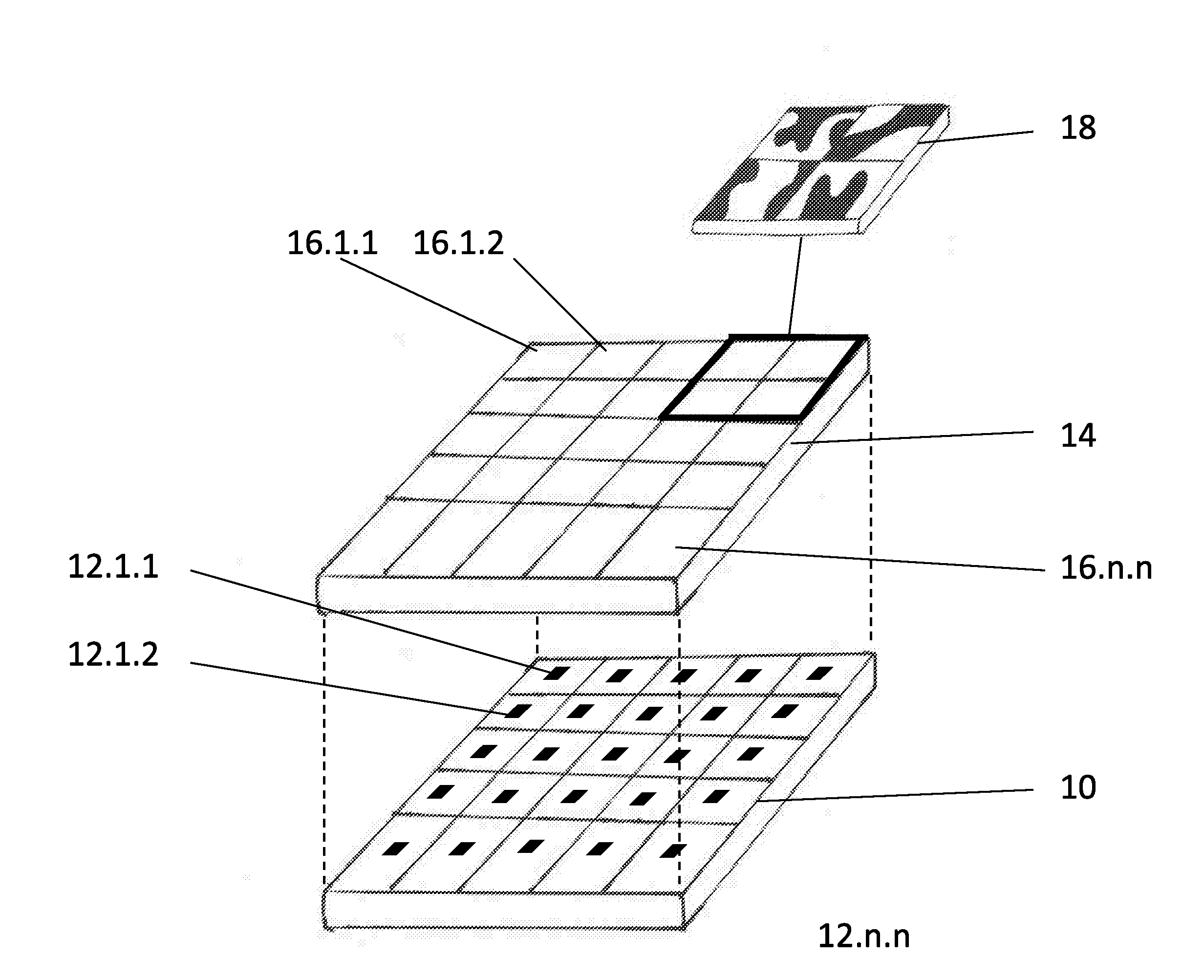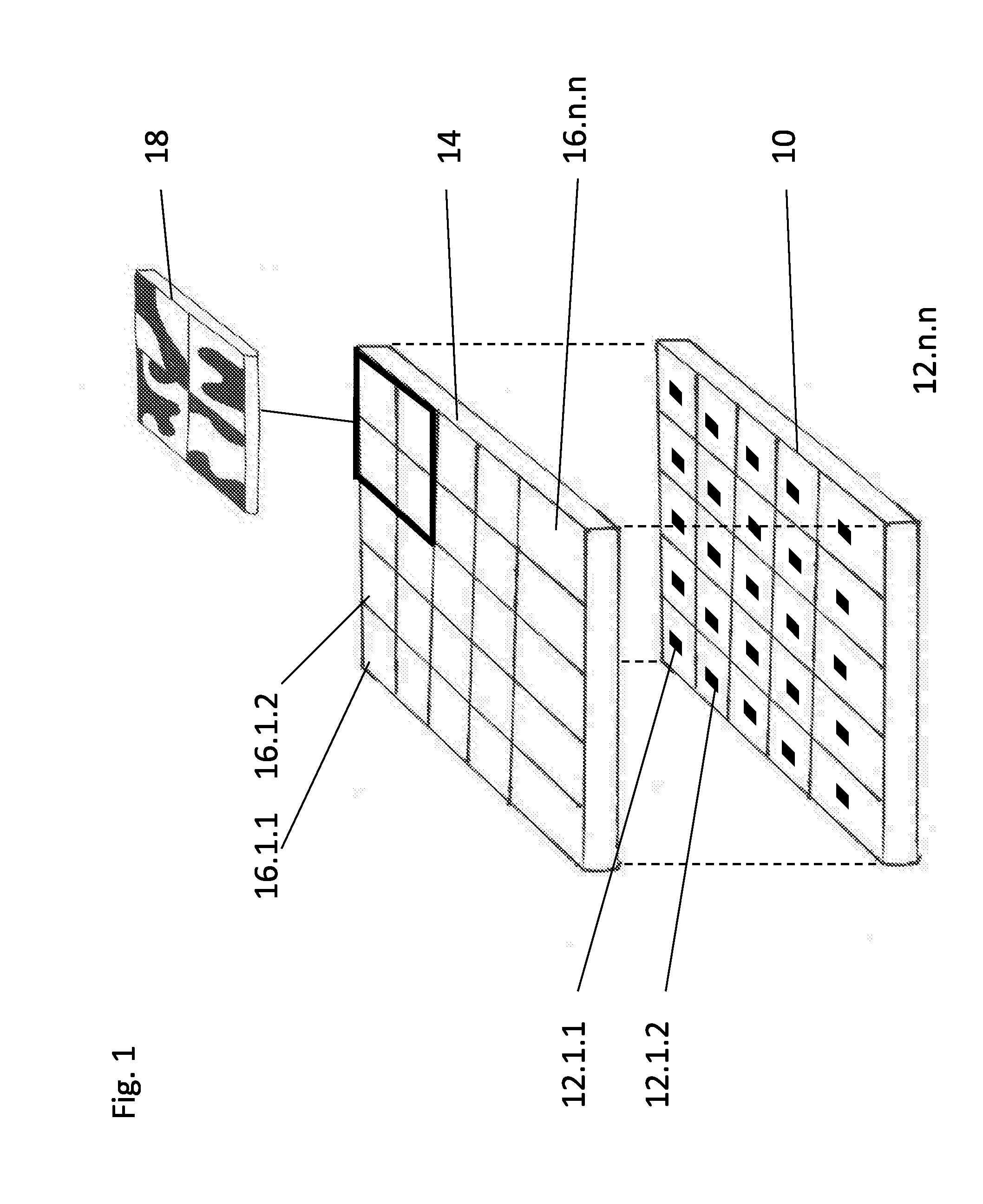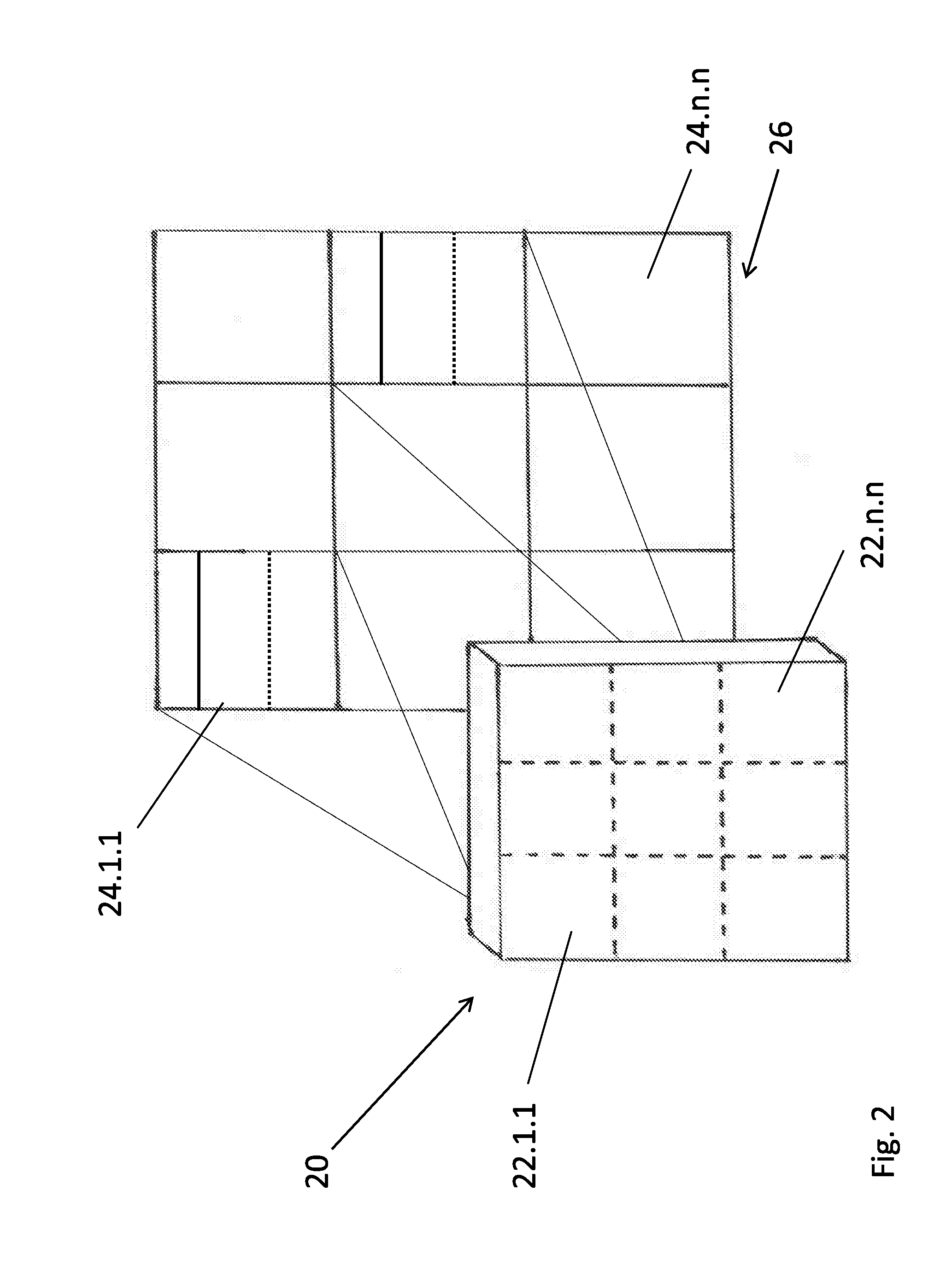Three Dimensional Depth Mapping Using Dynamic Structured Light
a structured light and depth mapping technology, applied in the field of three-dimensional depth mapping using structured light, can solve the problems of high implementation cost, difficulty in providing ideal beam geometry, and inability to accurately combine motion tracking and feature recognition, and achieve the effect of reducing increasing the resolution of the structured light pattern
- Summary
- Abstract
- Description
- Claims
- Application Information
AI Technical Summary
Benefits of technology
Problems solved by technology
Method used
Image
Examples
Embodiment Construction
[0069]The present invention, in some embodiments thereof, relates to three-dimensional depth mapping using structured light, and more particularly, but not exclusively, to a system for tracking in order to provide input to a computer.
[0070]The following applications to the same assignee are hereby incorporated by reference as if fully set forth herein, namely U.S. patent application Ser. No. 13 / 497,589, filed Sep. 19, 2010, International Patent Application No. WO2013 / 088442 filed 13 Sep. 2012, U.S. Provisional Patent Application No. 61 / 926,476 filed 13 Jan. 2014, and U.S. Provisional Patent Application No. 62 / 035,442 filed 10 Aug. 2014.
[0071]As discussed above, various devices use structured light patterns to enable gesture recognition and 3D depth mapping. A structured light pattern transmitter includes a light source, for example a laser emitter, and an optical element such as a diffractive optical element (DOE). As many diffractive designs requires a coherent Gaussian shaped beam...
PUM
 Login to View More
Login to View More Abstract
Description
Claims
Application Information
 Login to View More
Login to View More - R&D
- Intellectual Property
- Life Sciences
- Materials
- Tech Scout
- Unparalleled Data Quality
- Higher Quality Content
- 60% Fewer Hallucinations
Browse by: Latest US Patents, China's latest patents, Technical Efficacy Thesaurus, Application Domain, Technology Topic, Popular Technical Reports.
© 2025 PatSnap. All rights reserved.Legal|Privacy policy|Modern Slavery Act Transparency Statement|Sitemap|About US| Contact US: help@patsnap.com



